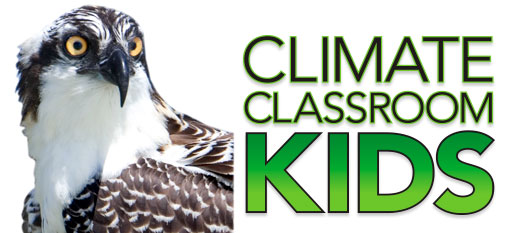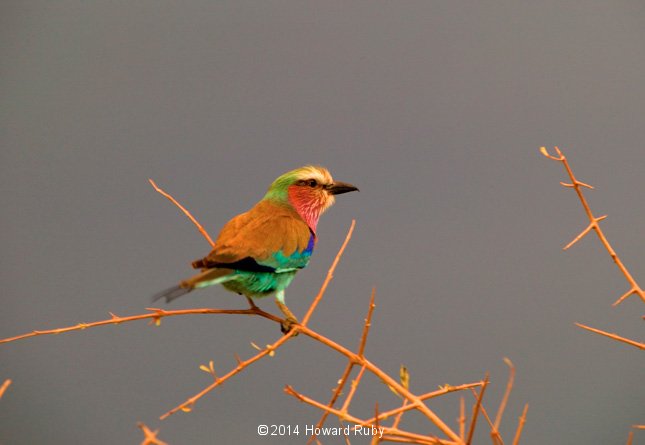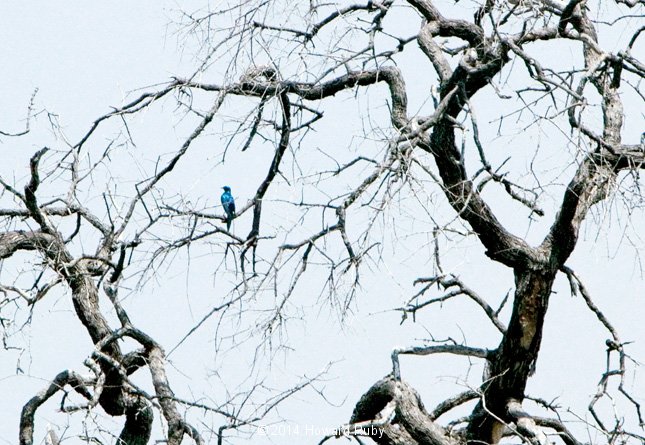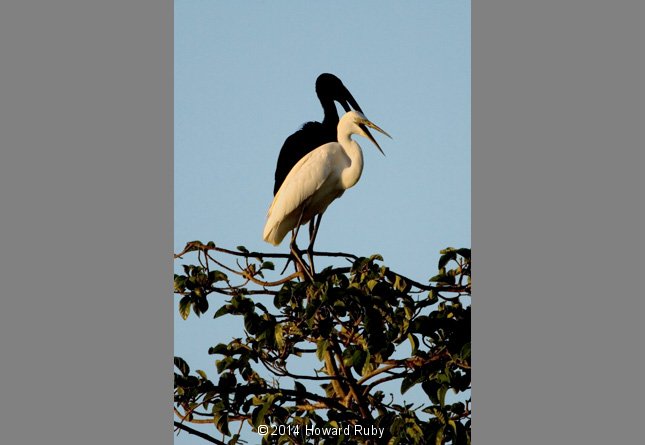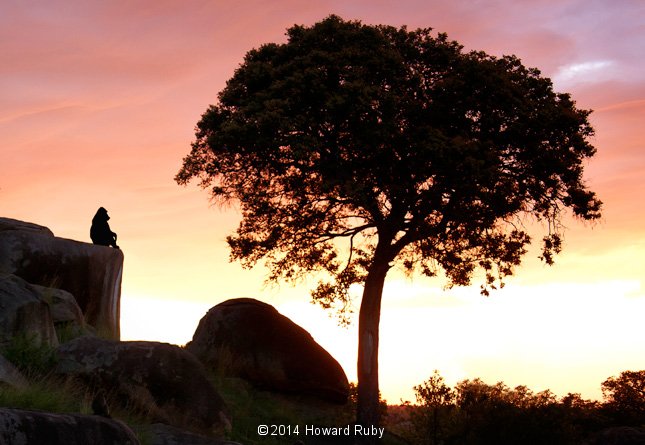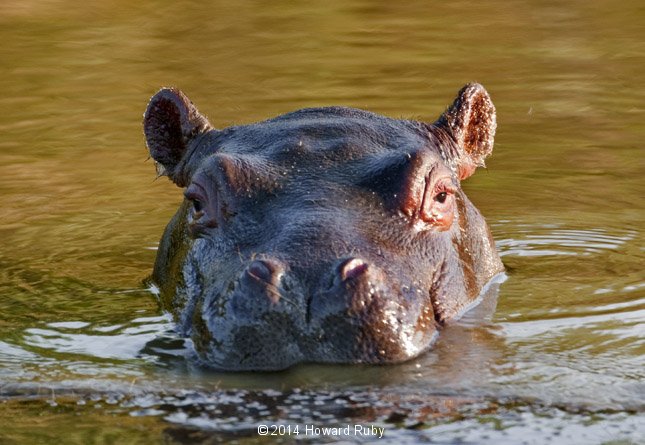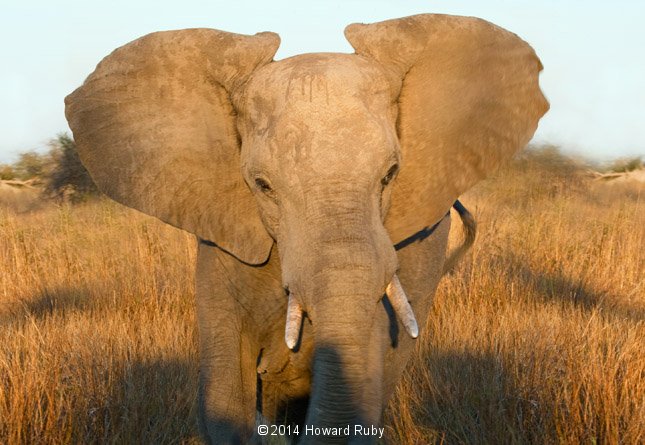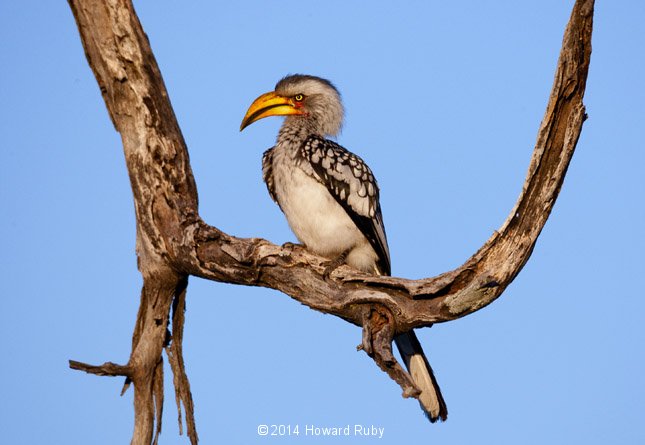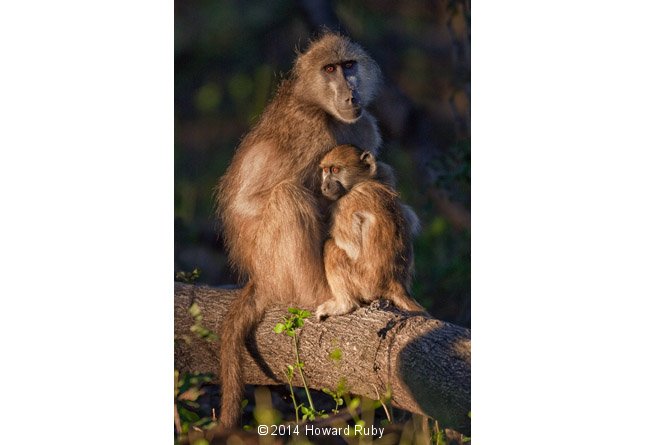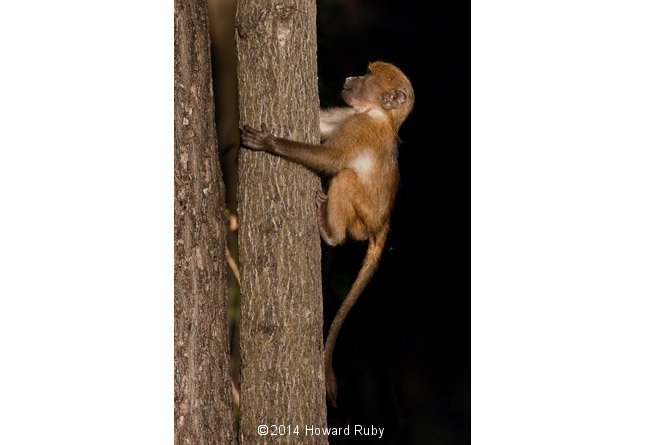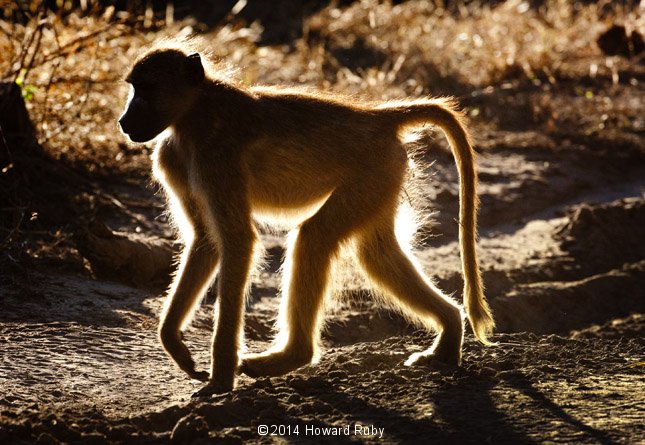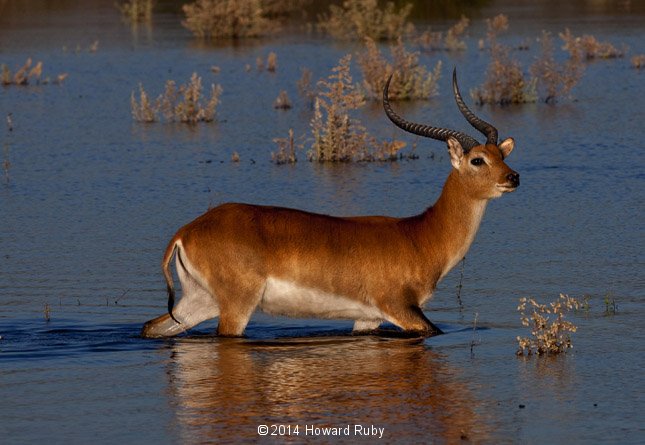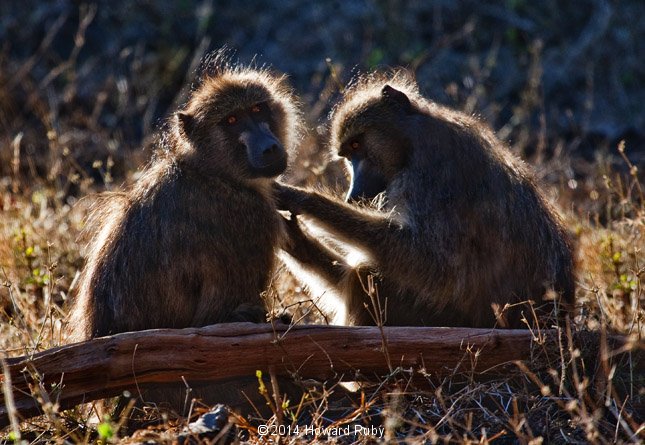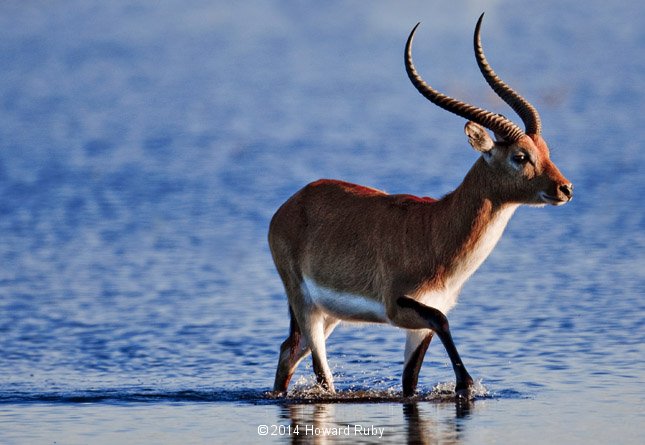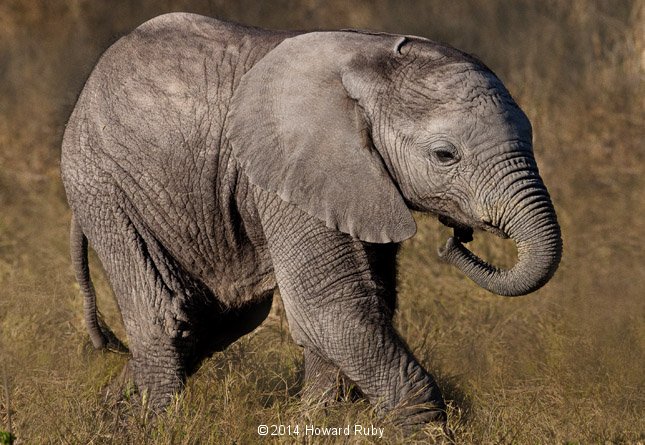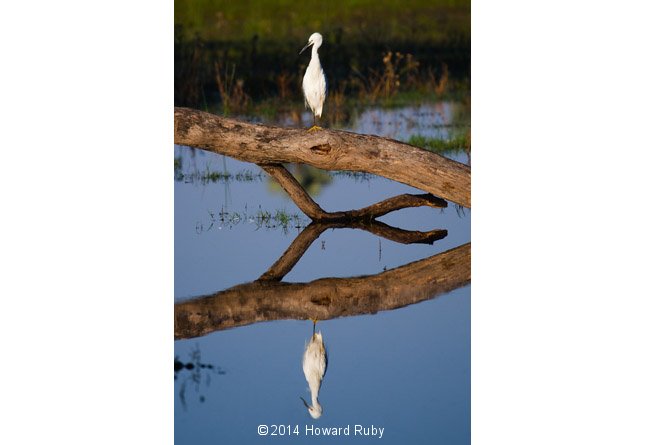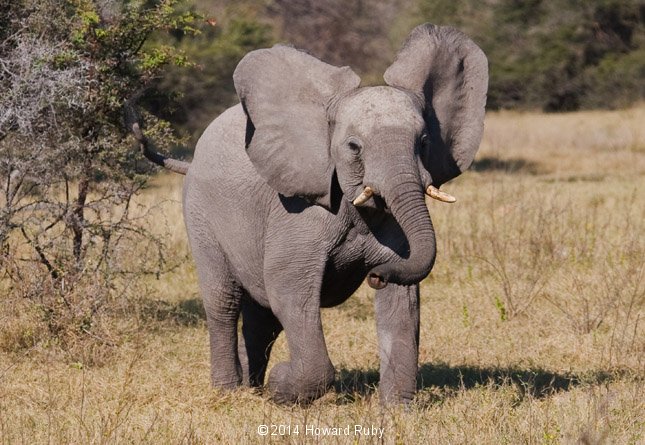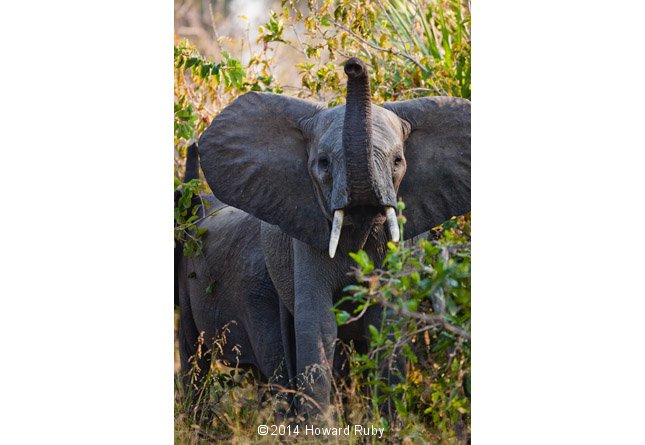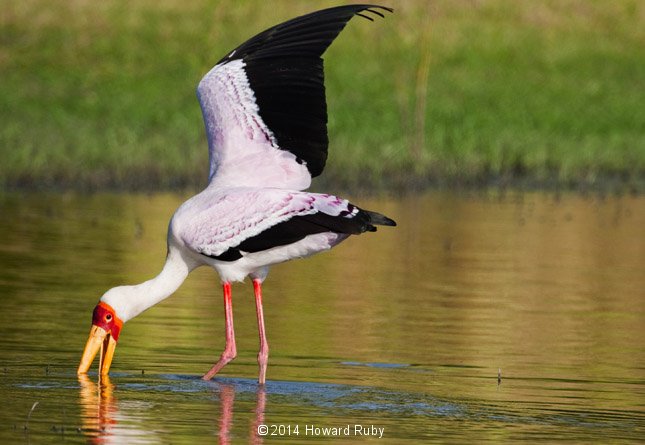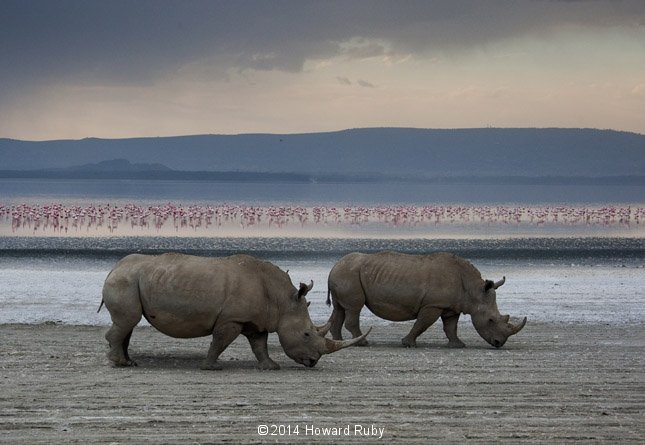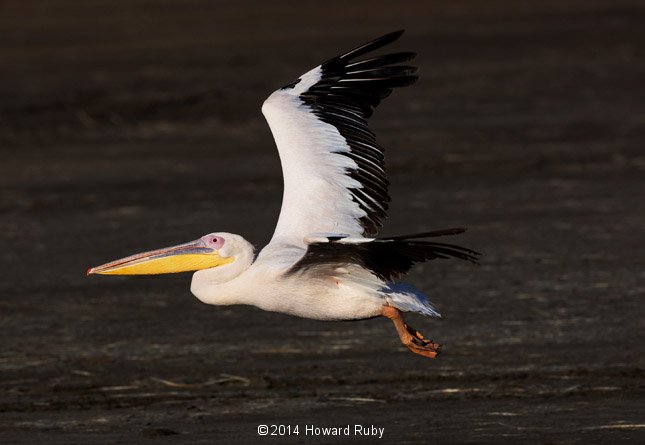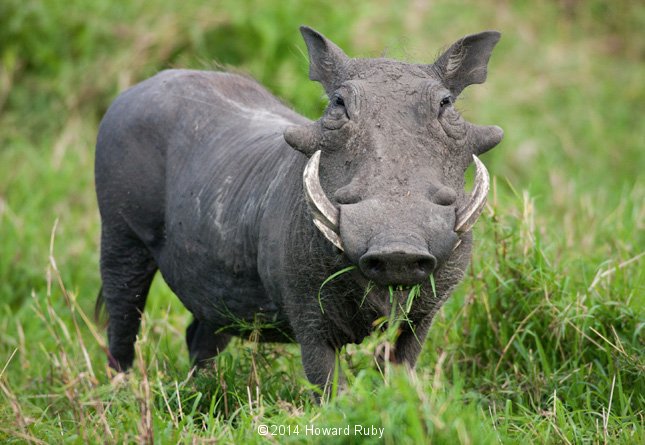Elephants, Hippos & More
The photos in this gallery were all taken at the Okavango (oh-ka-vahn-go) Delta in Botswana, Africa. The Okavango Delta is a unique ecosystem of floodplains, water-lily lagoons, forest glades and savannah grasslands. Mammals like elephants and hippopotamuses, birds such as the stork and heron, amphibians, and many other animals and plants are all an important part of this ecosystem. As you read fun facts about the animals below think about how they “fit together” in this amazing place. How could climate change affect they way live together?
African Elephant
Imagine a creature as big as a truck, with a hose-like nose that serves as a snorkel, a drinking straw, a squirt-gun, a trumpet, and a feeding tool powerful enough to rip branches from trees but delicate enough to pick up a pea. Throw in huge, sail-like ears, a pair of curved front teeth that grow throughout the animal’s entire lifetime, and a ropy tail, and you’ve got the African Elephant!
There are two types of elephants in Africa: Savanna Elephants and smaller Forest Elephants. They can be up to 25 feet long including the trunk, and 8-11 feet high, and weigh from 4000-13000 pounds!
Elephant tusks are long and curved, with a record length of 11 feet and weighing 286 pounds each. Elephants have good vision and great hearing, but they also sense the world through their trunks. The tip of an elephant’s trunk is much more sensitive than the tips of your fingers! Elephants also have a super sense of smell—better than a dog’s. They use their sensitive trunks to constantly sniff and touch the world around them.
Elephants are big talkers. Scientists say that the animals are almost always “speaking” with one another with sounds, smells, touch, and body language.Elephants can display annoyance, anger, and fear by flapping their ears and spreading them wide, lowering their trunks, and kicking up dust.
Elephants use dozens of different sounds. Some of these sounds are too low to be heard by human ears. The low sounds travel over long distances, so elephants can hear each other, even when the herd is spread out. Elephant herds also set off vibrations in the ground when they move. Elephants that are far away can pick up these vibrations through their feet. That helps them keep track of each other!
Pelican
Diving from great heights, the pelican plunges headfirst into the water and scoops up fish into the expandable pouch beneath its bill. When the water drains out, the pelican throws its head back and swallows.
Stork
Storks perch motionless on a bare branch or slowly stalk through marshes in search of food. They obtain food — mainly fish and snakes — by probing the water with their bills, locating prey by sense of touch.
Goliath Heron
Herons can stand as still as a statue at the water’s edge, waiting and watching for a fish or frog to happen by. The instant one appears, the bird makes a lightning-fast strike with its spear-like bill.
